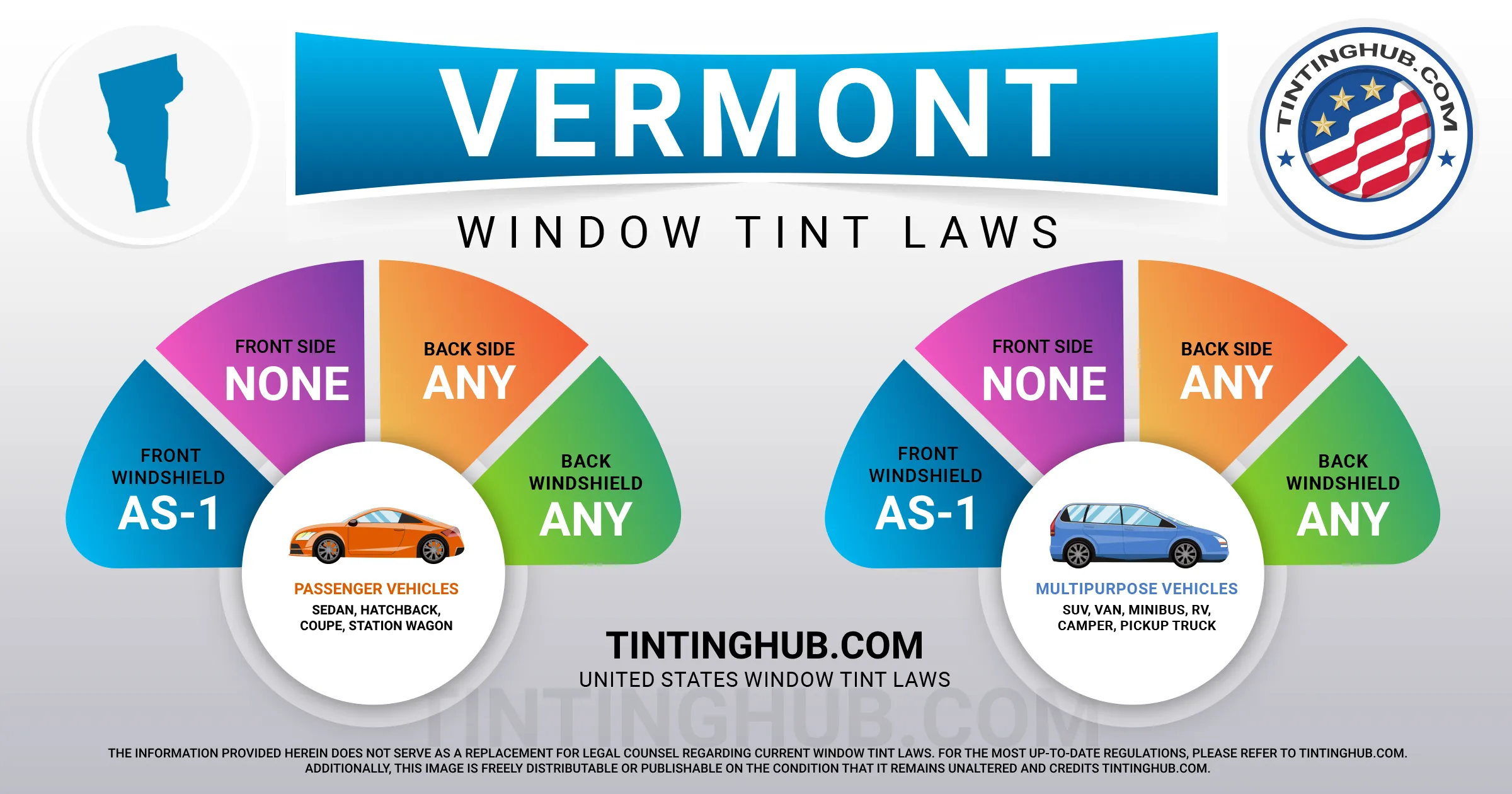Vermont Window Tint Laws (Last Update 2024)

Car window tinting regulations in Vermont have been in place since 1984. To ensure you’re fully informed about your vehicle’s window tint, including the permissible levels of darkness and reflectivity, let’s delve into the specifics. Below, we’ll outline the key guidelines and rules related to car window tinting in the Green Mountain State.

Window Tint Darkness Requirements in Vermont
In Vermont, the permissible amount of visible light passing through your car’s windows is referred to as Visible Light Transmission (VLT). These VLT requirements vary for sedan cars and SUVs or vans.
Sedans:
- Windshield: Non-reflective tint is allowed above the manufacturer’s AS-1 line.
- Front Side Windows: No tint is permitted on these windows.
- Back Side Windows: Any level of darkness is permissible.
- Rear Window: Any level of darkness is permissible.
SUVs and Vans:
- Windshield: Non-reflective tint is allowed above the manufacturer’s AS-1 line.
- Front Side Windows: No tint is allowed on these windows.
- Back Side Windows: Any level of darkness is permissible.
- Rear Window: Any level of darkness is permissible.
Window Tint Reflection Regulations in Vermont
Window tint can reduce glare and heat by reflecting incoming light. Vermont’s regulations dictate the allowable level of reflection for tinted windows.
Sedans:
- Front Side Windows: Mirrored or metallic appearance is not permitted.
- Back Side Windows: Mirrored or metallic appearance is not permitted.
SUVs and Vans:
- Front Side Windows: Mirrored or metallic appearance is not allowed.
- Back Side Windows: Mirrored or metallic appearance is also prohibited.
Additional Vermont Window Tint Regulations
In addition to darkness and reflection requirements, Vermont has other important laws and regulations related to window tinting. Here are the key points:
- Side Mirrors: If the rear window is tinted, dual side mirrors are mandatory in Vermont.
- Restricted Colors: The state does not prohibit the use of specific tint colors.
- Certificates: Film manufacturers are not required to certify the tint.
- Stickers: There is no legal requirement for a sticker to identify compliant tinting.
- Medical Exceptions: Vermont’s tinting laws accommodate medical exemptions, allowing the use of darker tint for medical reasons.
It’s worth noting that interpretations of Vermont’s tinting laws may differ at the county or municipal level. Therefore, it’s advisable to verify this information with your local Department of Motor Vehicles or law enforcement agencies for precise guidance.
Please be aware that our knowledge of Vermont’s window tint laws was last updated in 2023. If you find any discrepancies or outdated information, don’t hesitate to contact us for corrections. We take pride in being a trusted industry leader providing accurate and up-to-date information on window tint regulations.